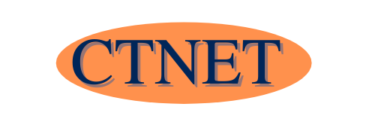I’m now 54, and I started my last period of studying when I was 37 when I started part-time studies for my degree with the Open University. While studying for my degree, I had no idea of the Zettelkasten method, so I typed my notes in Microsoft Word.
I’m now aware of the Zettelkasten method, and I wish I had known about it when I was 37. Heck, I wish I had known about it when I was 14. However, I doubt I could have had a digital variant back in 1984.
In this post, I want to explore my reasons for thinking that anyone who is at school, college, or University should definitely start one, as well as anyone else who wants to learn.
What is a Zettelkasten
Zettelkasten is German for slip box, as it was based on making notes on index cards and storing them in slip boxes. What made the Zettelkasten method different from other paper-based systems was the concept of linking related ideas, allowing you to form connections between ideas and concepts across subjects.
The most famous user of the Zettelkasten method was Niklas Luhmann, a German sociologist who, thanks to his Zettelkasten, published many books and essays during his life and even after his Death.
When I started my degree at 37 in 2007, it would have been difficult to create a digital Zettelkasten. This is no longer the case, with many applications capable of supporting one. The following section will explore what capabilities you should look for.
You can learn more about the Zettelkasten method in our guide.
Functionality to search for in an application
Ideally, you want to find a note-taking application that supports both tags and backlinks. Tags help you to provide some structure to your notes by allowing you to group related notes. At the same time, backlinks will enable you to link related notes.
Applications that support these capabilities are called a PKM (Personal Knowledge Management) applications. You can learn more about the Personal Knowledge Management system in our guide.

How to start a digital Zettelkasten?
Firstly, you will need to decide on what application you will use for a Zettelkasten. At a minimum, it should be a note-taking application that supports backlinks and tags. I recently published a blog post listing the three Personal Knowledge Management applications I suggest for students. I suggest that you read that first before continuing with this post.
The Zettelkasten method consists of three type of notes.
- Fleeting notes are your initial notes. They could be notes from a book or a lecture, or they could be an idea that comes to you when out on a walk.
- Literature notes. These are the notes on the source of any related notes. For instance, if you read a book, you create fleeting notes while reading. These notes form your literature notes.
- Permanent notes. These notes contain the actual ideas and facts you learn. A permanent note should be atomic, referring to one idea or fact. It should also be written in your own words.
I recommend reading our introductory guide to Zettelkasten to help get you started.
Further Reading
As well as the Introductory Guide to Zettelkasten I would also recommend.
- Taking smart notes by Sonke Ahrens
- The essential guide to fleeting notes
- How to take literature notes
- Creating a Zettelkasten in Obsidian
- Creating a Zettelkasten in Logseq
- Using Notion as a Personal Knowledge Management System
I have also linked to the Personal Knowledge Management section of our website, which contains all of our articles on Personal Knowledge Management systems.
I would also appreciate it if you could fill in our feedback form to help us make better content for you.
